
The choice of the method (direct, Patterson) is suggested by the presence or not of "heavy" atoms.
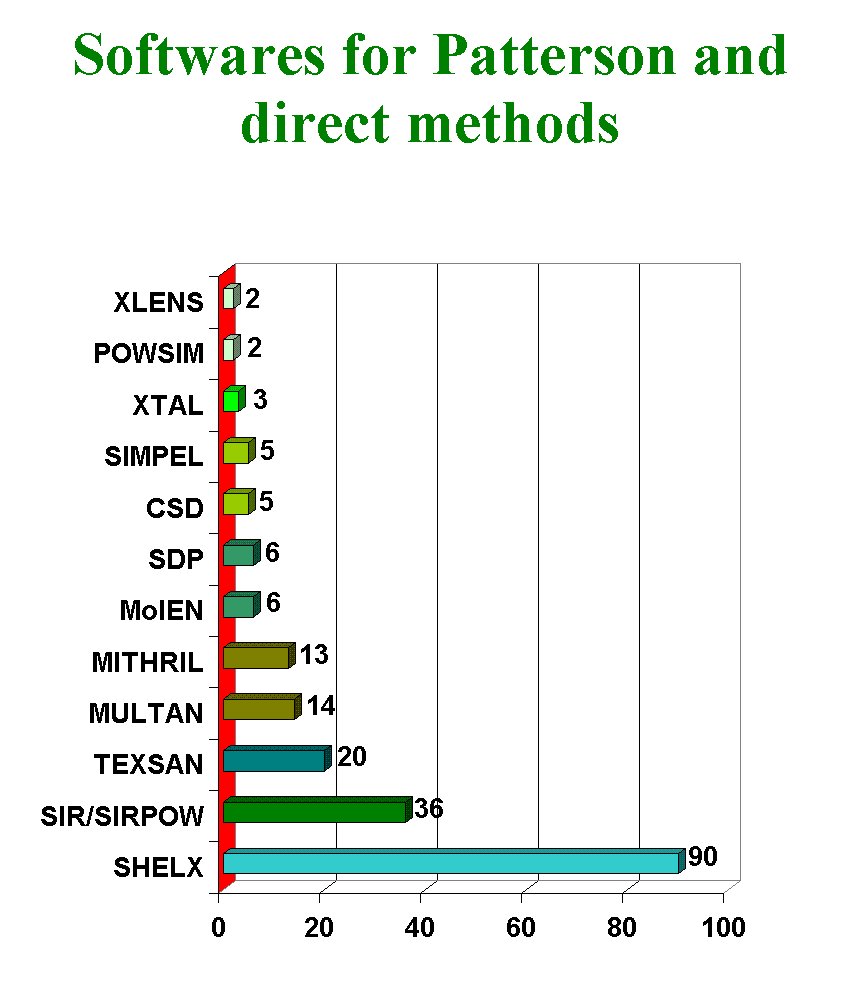
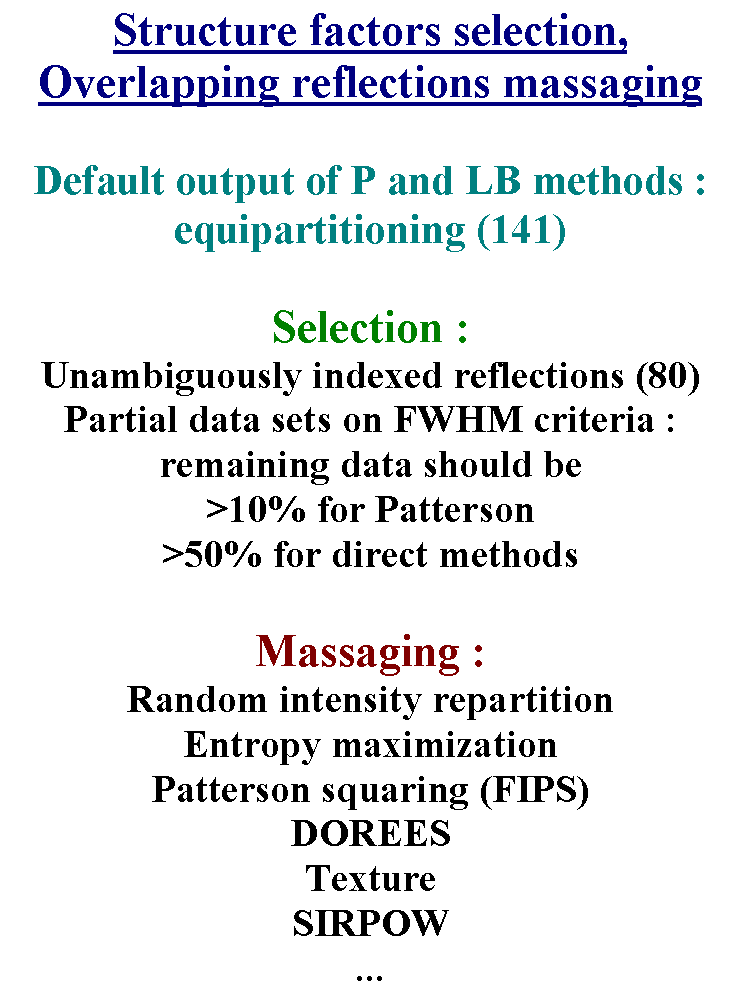
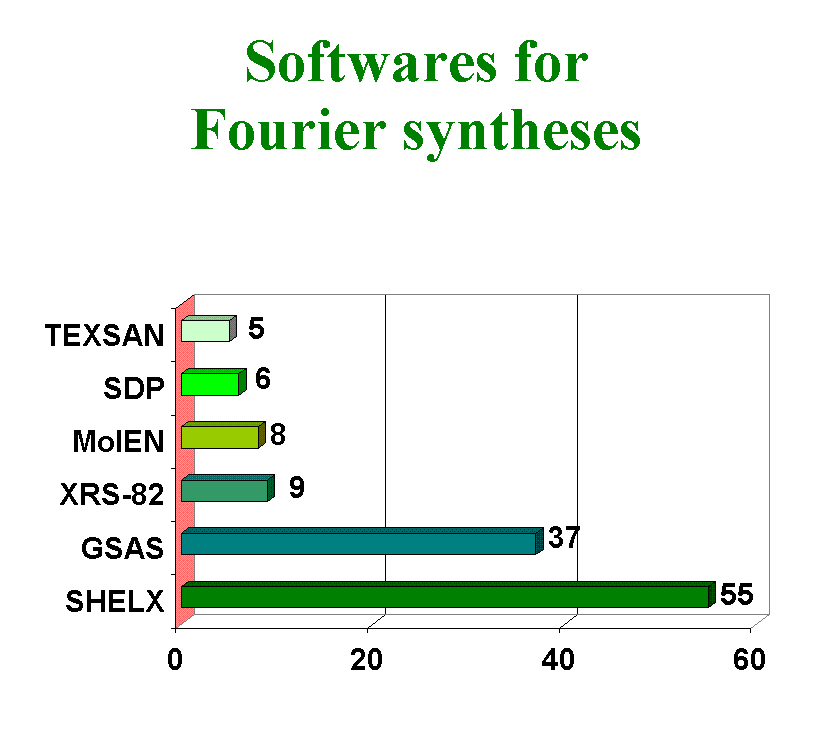
Na2C2O4

OVERLAP is easy to run :

Results from different datasets.
[Pd(NH3)4]Cr2O7
The PATT option of SHELXS86
proposes
two atoms :
Pd at 0,0,0 coordinates and Cr at 0,0,0.5.
Should be two palladium atoms sites.
A first refinement (with SHELX76), leads to a result
quite unsatisfying with R = 0.62.
2 peaks clearly distinct in weight which could be associated with 2 Cr atoms.
This hypothesis is tested with SHELX76.
The reliability factor goes down to 35%.
Next Fourier difference synthesis.
And what would have given the direct methods ?
Application to the 1054 hkl,
of which probably no more than 250 are more or less
well estimated,
proposes randomly the 4 heavy atom sites (2 Pd + 2
Cr)
at the
head of the list and
evenmore !
t-AlF3
The brute force consisting in the SHELXS-97 application to the whole dataset gave a list of 15 atom sites.
Examining this list by a structure drawing program (STRUVIR) revealed immediately that the 11 first atom sites described completely a new MX3 corner sharing 3D network.
Where is the merit of the researcher ?
Thanks to G. Sheldrick !
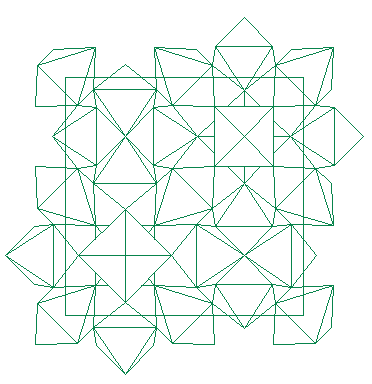
beta-BaAlF5
X in OVERLAP Dataset R(%)SHELX76 0 1387 36 0.01 1099 51 0.02 866 39 0.03 691 39 0.04 522 46 0.05 427 46 0.06 338 42
SHELXS-97 proposition.
SHELX76 refinement result.
A structure drawing is very convincing that a large part of the beta-BaAlF5 structure has been obtained :
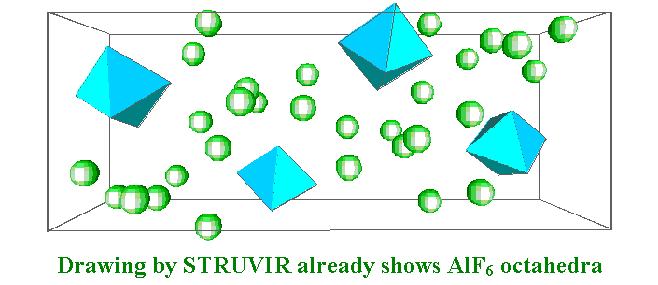
The next step will be obviously to apply the Rietveld
method.
Solving the structure from the X-ray data was much
easier.
The two barium atoms only had to be located.
Cimetidine C10H16N6S
The 924 extracted reflections are put into SHELXS-97,
applying the direct methods by the "brute force".
The
resulting top 17 peaks
are introduced into SHELXL
for a refinement against a reduced dataset
A very encouraging R1 ~ 18% was obtained allowing to go further.